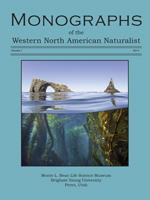The natural vegetation of Santa Cruz Island was severely disturbed by nonnative herbivores for well over a century. As the livestock and feral ungulates (primarily sheep, cattle, and pigs) were removed from the island over the last 30 years, many of the native plant communities began to recover naturally. Recovery has been extremely slow in other areas, especially where nonnative annual grasses and fennel (Foeniculum vulgare) dominate several hundred hectares that were under intense agricultural use (pastures and farmed lands). We experimentally tested the feasibility of speeding up the recovery process in a postagricultural area of the island's Central Valley using active restoration techniques. We assessed how weed control via herbicide application and planting of small nursery stock without irrigation might contribute to restoring natural plant assemblages in 3 different areas of the Central Valley (valley bottom, upper south-facing slope, and midsouth-facing slope). In February 2009, we planted the same 21 species of native plants in experimental plots with and without weed control at each location. In December 2009, we planted 28 species in adjacent plots after 2 seasons of weed control. We assessed natural recruitment in weeded and unweeded plots that were not planted. At all 3 locations, a single early season herbicide treatment prior to planting had strong positive effects on the survival, cover, and reproduction of planted natives compared to no herbicide treatment; the effects persisted and grew stronger in the second and third years. Repeated herbicide treatments over 2 years before planting did not result in any additional significant positive effects on native survival or growth compared to only one herbicide treatment. We saw virtually no natural recruitment of native shrubs in unplanted plots. We found that typical coastal sage scrub species performed best at the upper slope site and poorly at the valley bottom site. Grasses and shrubs tolerant of poorly drained soil did better in the valley bottom. We found that planting native species from small nursery stock without irrigation is effective for a wide range of grassland and coastal sage scrub species. All of the restoration techniques we used are cost effective and can be scaled-up to restore large areas of postagricultural lands.
How to translate text using browser tools
1 January 2014
Experimental Planting of Native Shrubs on Santa Cruz Island from Small Nursery Stock
Matthew L. James,
David M. Hubbard,
Coleen Cory





